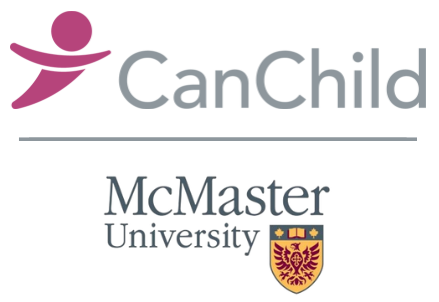For Everyone
Home » Diagnoses » For Everyone »
Spina Bifida
Spina Bifida literally means “split spine.” Spina Bifida happens when a baby is in the womb and the spinal column does not close all of the way. This happens within the first four weeks of pregnancy. About 120 children are born with spina bifida every year in Canada.
Children born with spina bifida can have impairments of the spinal cord only or also the brain ( depending on the type of spina bifida). With research and advances in medical technology, 90% of the babies survive and become adults!
The three most common types of spina bifida are:
- Myelomeningocele (my'-low-meh-nin'-go-seal): This is the form in which the spinal cord and its protective covering, the meninges, protrude from the opening in the spine.
- Meningocele (meh-nin'-go-seal): The spinal cord develops normally, but only the meninges protrudes from the opening created by damaged or missing vertebrae and may be exposed.
- Occulta (oh-kul'-tah): Occulta, which means "hidden", indicates that the defect, where one or more vertebrae are malformed, is covered by a layer of skin.
Children and adults with spina bifida typically have difficulties to move around and mobility issues (walking, wheelchair use, and transportation).
Causes
No one knows for sure. Scientists are studying the effects of genetic and environmental factors.
Identification
Most babies are diagnosed with spina bifida before or at birth. Children with spina bifida occulta find out at an older age.
Assessment
Neurological problems (spinal cord and brain) associated with spina bifida depend on the size and location of the defect at birth.
The care of children born with spina bifida should be provided with a multidisciplinary teams of specialists. Collaboration among all providers is important to ensure the best health and outcomes. Any change and worsening of function should be evaluated for a treatable cause.
Related Disorders
Spina Bifida comes in many forms and can range from no impairments to lifelong limitations (disabilities). Typical impairments include weakness of the leg muscles, lack of sensation (touch, temperature, movement) in the legs, bowel and bladder control. Also seizures (epilepsy) and (non-verbal) learning or cognitive difficulties can occur.
Other medical related disorders are scoliosis (curved spine), reduced joint mobility (contractures), impaired bone health, pain, skin issues (due to a lack of sensation and thus protection), and sexual issues. Specific neurological related disorders are hydrocephalus (sometime a drain or shunt is needed when there is too much pressure) and a tethered cord.
Resources
http://www.sbhao.on.ca/spina-bifida
http://spinabifidaassociation.org/resources/sb-university/
Liptak GS, Dosa NP. Myelomeningocele. Pediatr Rev. 2010 Nov;31(11):443-50. doi: 10.1542/pir.31-11-443. Review. PubMed PMID: 21041422.
CanChild Studies:
1. How should we talk about weight-related issues in spina bifida care? Principal Investigator : McPherson, A; Co-investigators: Chen, L; Church, P; Gorter, JW; Lyons, J; Collaborator : Swift, J; Funding Sources: Spina Bifida and Hydrocephalus Association of Canada
Report: http://www.sbhac.ca/beta/pdf_files/McPherson-et-al-SBHAC-Final-Report.pdf
2. Status of Bone Health in Children with Spina Bifida Principal Investigator : Genier, Kim; Co-investigator : McAssey, K; Timmons, Brian; Gorter JW (supervisor). Funding Sources: McMaster University (2012 Residents Research Award)
Students: Dogyeong Lee, Joshua, BHSc McMaster (2012-2014) and Hanna, Andrew, BHSc McMaster (2012-2014) supervised by JW Gorter
Articles:
Schoenmakers MA , de Groot JF , Gorter JW , Hillaert JL , Helders PJ , Takken T. (2009). Muscle strength, aerobic capacity and physical activity in independent ambulating children with lumbosacral spina bifida.Disability and rehabilitation. 31(4): 259-266.
